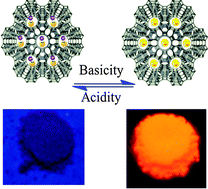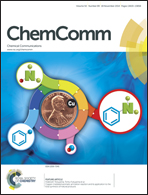Luminescent europium(iii)–β-diketonate complexes hosted in nanozeolite L as turn-on sensors for detecting basic molecules†
Abstract
The luminescence efficiency of Eu3+–β-diketonate complexes entrapped within the channels of nanozeolite L is severely decreased by the acidic environment in the channels. The neutralization of the acid sites can remarkably increase the luminescence efficiency due to the formation of complexes with high coordination numbers. Herein we report a simple, effective and robust luminescent sensor for detecting basic molecules (such as amines) based on the above observations.


 Please wait while we load your content...
Please wait while we load your content...